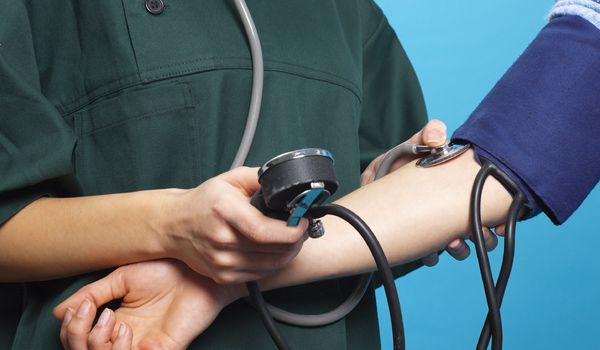Why Your Blood Pressure Should Be Checked in Both Arms

People who have different blood pressure readings in their right versus left arm may be at increased risk for serious heart problems later in life, a new study suggests.
Researchers analyzed blood pressure readings from more than 3,300 people ages 40 and older in Massachusetts. The study looked at only the systolic blood pressure, or the "top" number in a blood pressure reading.
People whose systolicblood pressure readings differed by 10 millimeters of mercury (mm Hg) or more between their right and left arms were 38 percent more likely to have a cardiovascular problem, such as a heart attack or stroke, over a 13-year period compared with people with smaller differences between their arms. [7 Foods Your Heart Will Hate]
The findings held even after the researchers took into account factors that might increase a person's risk of heart problems, such as high blood pressure, high cholesterol and diabetes.
The results suggest doctors should consider measuring blood pressure in both arms, the researchers said. Although the American Heart Association recommends that people have their blood pressure measured in both arms at their first visit with a doctor, most have their blood pressure taken in just one arm.
"Blood pressure is easily obtained in an office setting, and our findings support recommendations for measurement of blood pressure in both arms," the researchers wrote in the March issue of the American Journal of Medicine.
A 2012 study linked a difference in systolic blood pressure between the arms with an increased risk of peripheral artery disease (PAD), a condition that involves a narrowing of the arteries in the extremities.
Get the world’s most fascinating discoveries delivered straight to your inbox.
Follow Rachael Rettner @RachaelRettner. Follow Live Science @livescience, Facebook & Google+. Original article on Live Science.

Rachael is a Live Science contributor, and was a former channel editor and senior writer for Live Science between 2010 and 2022. She has a master's degree in journalism from New York University's Science, Health and Environmental Reporting Program. She also holds a B.S. in molecular biology and an M.S. in biology from the University of California, San Diego. Her work has appeared in Scienceline, The Washington Post and Scientific American.
